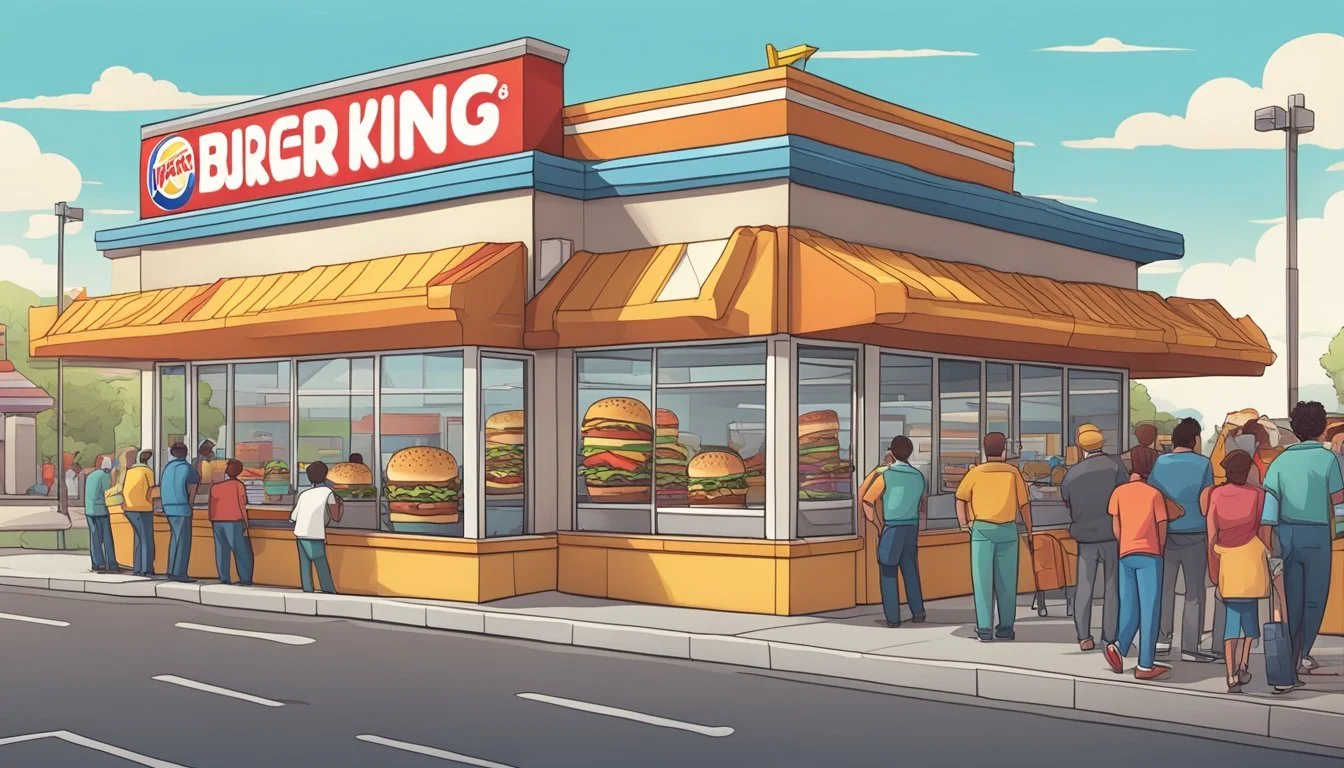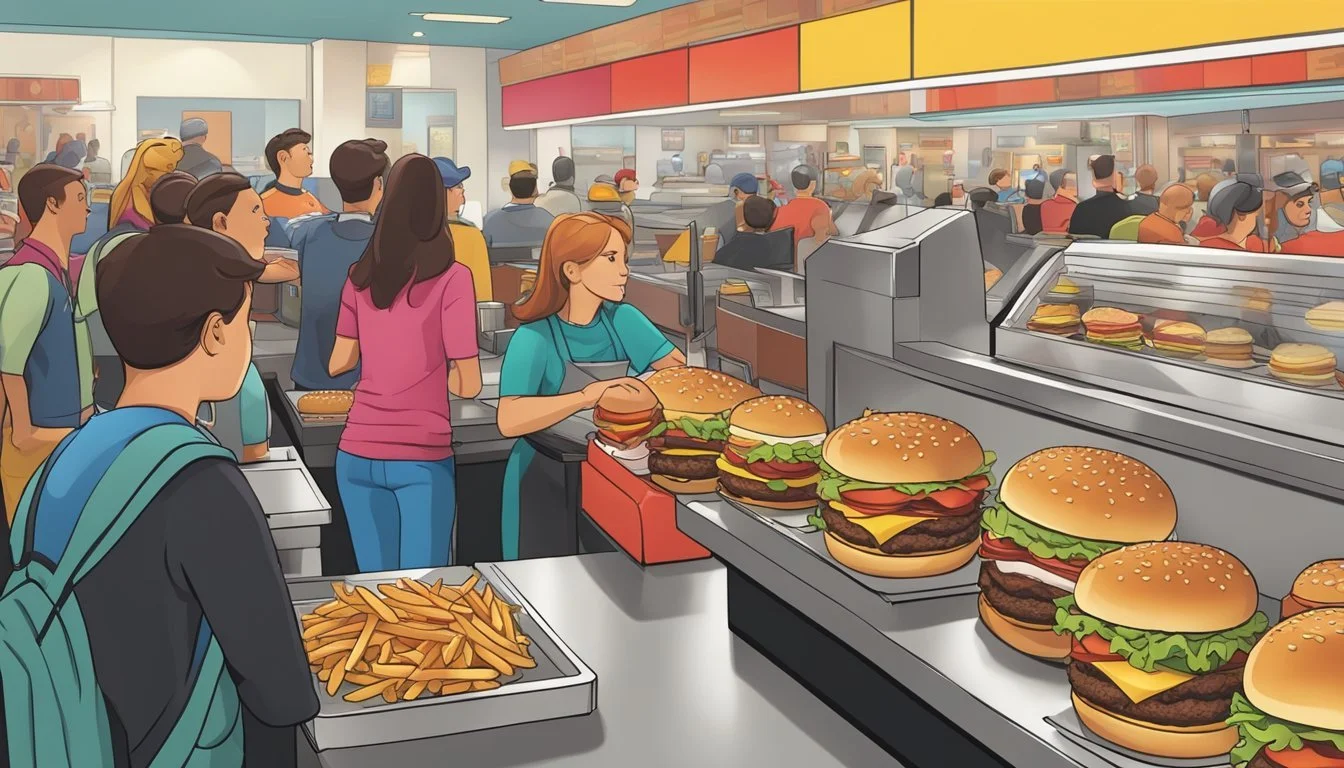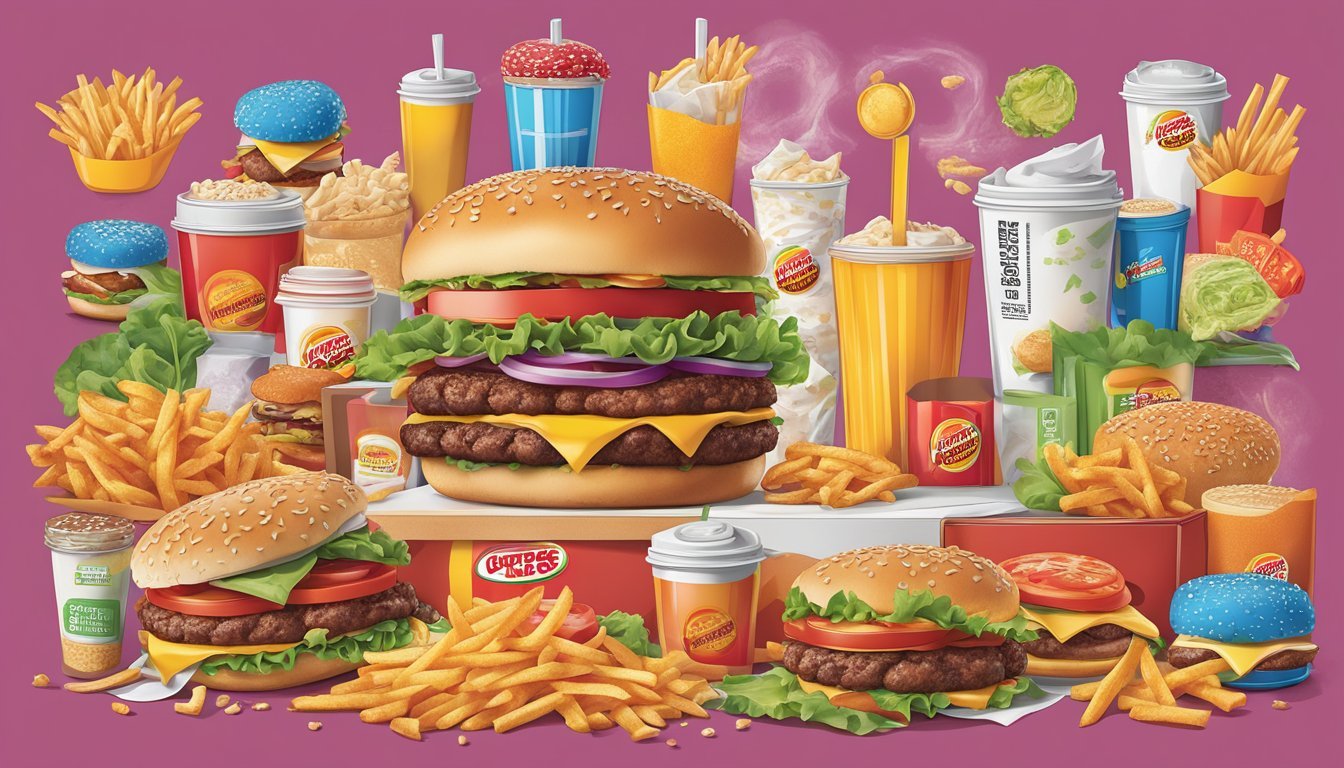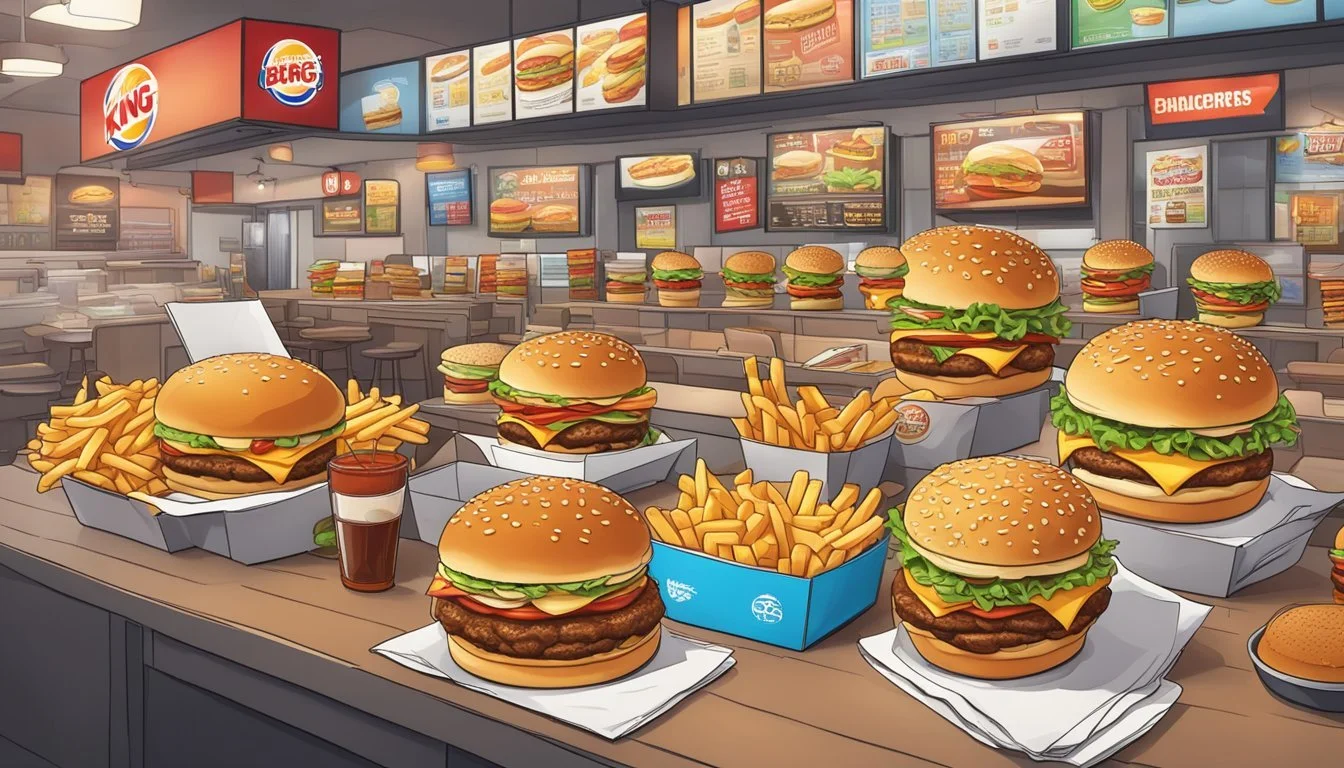Burger King vs Carl's Jr.
An Unbiased Comparison of Fast-Food Giants
In the world of fast food, the debate over which burger joint reigns supreme is a persistent one, with Burger King and Carl's Jr. standing out as notable contenders. Both franchises boast a significant following due to their distinctive flavor profiles and menu options. Burger King's iconic Whopper, known for its flame-grilled taste and fresh ingredients, has long been a staple, while Carl's Jr. is praised for its charbroiled burgers and a variety of innovative toppings.
Comparing these two chains involves more factors than just taste preferences. Customers often consider the overall dining experience, which includes the quality of ingredients, the diversity of the menu, pricing, and nutritional value. Burger King has positioned itself as offering a pleasurable taste experience with its juicy patties and excellent buns. Meanwhile, Carl's Jr. appeals to those looking for more premium or specialty options within a budget-friendly range.
Yet, to determine which is better, one must also look at the specifics such as the construction of the burgers—Burger King with their balanced layers and Carl's Jr. with their loaded offerings—and how these impact the practicality of eating on the go. Each brand brings a unique approach to a classic American staple, leaving the decision on which is better to individual preferences and priorities when it comes to fast food dining.
Brand Histories and Identities
The competition between Burger King and Carl's Jr. is steeped in the histories and brand identities that each has cultivated over the decades. Both have deep roots in American fast-food culture, yet they follow distinct paths that reflect their unique beginnings and branding strategies.
The Rise of Burger King
Burger King began in 1954 in Miami, when James McLamore and David Edgerton opened their first restaurant. They introduced the signature Whopper in 1957, a burger that would become synonymous with the brand. Over the years, Burger King pursued aggressive expansion strategies, becoming the second-largest burger chain in the world. Its brand identity is often tied to the famous slogan, "Have It Your Way," emphasizing customer customization.
Carl's Jr. - From Humble Beginnings
Carl's Jr. has its roots in a hot dog cart started in 1941 by Carl and Margaret Karcher. They invested $311 against their car, along with $15 in cash, to start their business in Los Angeles. The restaurant later evolved into Carl’s Jr. and gained reputation for its innovative menu and regional growth. In 1997, Carl's Jr. bought Hardee's, aiming to create a large, coast-to-coast chain while maintaining distinct brand identities. Carl's Jr. is known for its Western themes in advertising and menu offerings.
Menu Offerings and Varieties
In the fast-food industry, Burger King and Carl's Jr. cater to different taste preferences with a variety of burger options, including classic, specialty, and plant-based burgers, each presenting their own unique take on toppings and flavor.
Comparing Burger Menus
Burger King's cornerstone offering is the Whopper, a quarter-pound hamburger with lettuce, tomato, mayo, ketchup, pickles, and onions on a sesame seed bun. Their menu also features a Double Whopper and variations such as the Impossible Whopper, appealing to those seeking plant-based alternatives. The Bacon King features a hearty inclusion of bacon and cheese for a more indulgent option.
Conversely, Carl's Jr. offers a range of burgers, headlined by its Famous Star with cheese and the larger Super Star. Specialty items like the Western Bacon Cheeseburger combine the classic charbroiled patty with crisp bacon and onion rings for a western twist. Health-conscious options include the lettuce-wrapped, low-carb Thickburger, catering to those looking for traditional flavors with fewer carbs.
Burger Comparison:
Burger King: Whopper, Bacon King, Impossible Whopper
Carl's Jr.: Famous Star, Western Bacon Cheeseburger, Thickburger
Assessing Variety and Specialty Items
Burger King's menu variety extends to chicken offerings, such as the classic Chicken Nuggets and a range of chicken sandwiches. Their french fries are a staple side, and they offer an array of value items, including sliders and double cheeseburgers for those seeking smaller portions or value deals.
Carl's Jr. differentiates itself with unique items like the Hand-Breaded Chicken Sandwich and CrissCut fries. They also introduced plant-based offerings with the Beyond Meat patties. The Big Carl presents a double-decker burger experience akin to the Big Mac for patrons seeking a larger, more filling meal.
Specialty and Variety Items:
Burger King: Chicken Nuggets, Sliders
Carl's Jr.: Hand-Breaded Chicken Sandwich, Big Carl, Beyond Meat Patty
Both chains have adapted to diverse tastes and preferences, offering from classic burgers and value meals to specialty items and healthier alternatives. Each brand's offerings are tailored to its target market, providing an array of options for different dietary needs and flavor profiles.
Nutritional Information and Health Considerations
When comparing Burger King and Carl's Jr., consumers often consider the nutritional content and the source of ingredients of their offerings. This section provides a detailed analysis of caloric content and ingredient sourcing, with an objective to inform about health implications related to the consumption of their burgers.
Caloric Content Analysis
Burger King and Carl's Jr. have various burgers with different caloric values:
Burger King:
Whopper: Approximately 657 calories
Bacon King: Over 1,000 calories
Carl's Jr.:
The Really Big Carl: Approximately 1,180 calories
Big Hamburger: Approximately 480-540 calories
Consumers should regard these caloric values in the context of a general 2,000-calorie daily intake, which varies according to individual nutritional needs.
Sourcing of Ingredients
Burger King prides itself on using 100% beef patties with no fillers, additives, or preservatives. They also emphasize the use of fresh ingredients like tomatoes and onions in their burgers.
Carl's Jr. markets their burgers as made with 100% pure beef patties and is known for its signature charbroiled burgers. Ingredients like mushrooms and Swiss cheese in their Mushroom Swiss Burger highlight their dedication to flavor variety.
Both chains focus on the quality of their ingredients and claim to provide fresh produce and quality meats in their offerings. However, specific details about sourcing practices, like local vs. imported or the use of organic ingredients, are not typically disclosed.
Dining Experience and Atmosphere
When one compares Burger King and Carl's Jr., it's pertinent to consider the overall dining experience and atmosphere each burger chain provides. These factors significantly influence a customer's decision on where to dine, beyond just the price and taste of the food.
Restaurant Design and Layout
Burger King prides itself on a consistent design theme that is recognizable across its many locations. An average Burger King often features warm tones with pops of red and ample seating arrangements designed for quick dining experiences. Many locations also include play areas for children, making them family-friendly.
Carl's Jr., on the other hand, tends to have a more modern and sometimes edgier design, with their interiors often boasting a mixture of sleek surfaces and industrial accents. They also focus on comfort, with some locations offering more spacious seating areas to accommodate groups and encourage longer stays.
Cleanliness and Service Quality
In terms of cleanliness, both chains understand the importance of a clean dining area and are typically well-maintained. In some cases, the quality can vary by location, but generally both maintain a standard that reflects their brand values.
For service quality, speed and accuracy are common strengths for both chains. However, individual experiences may vary based on staffing, location, and peak dining hours. Employees at both Burger King and Carl's Jr. are trained to provide quick service to accommodate the fast-paced nature of the fast-food industry.
Both Burger King and Carl's Jr. strive to create a dining atmosphere that appeals to a broad customer base by paying close attention to design, cleanliness, and service quality.
Price Point and Value for Money
When deciding between Burger King and Carl's Jr., customers often compare the cost of a meal and the quality they receive in return. Both restaurants offer a range of products from value options to premium burgers, setting different expectations for the dining experience.
Average Cost of Meal
Burger King offers their signature Whopper priced at $7.79 on average, reflecting a significant increase from previous years. Despite the hike in prices, Burger King has maintained a selection of meals that cater to various budgets. In contrast, Carl's Jr. positions itself with more premium offerings, where its most expensive items are approximately 150.2% higher compared to Burger King's, suggesting a more upscale pricing model.
Burger Joint Low-End Meal Cost High-End Meal Cost Burger King Value options available Up to $7.79 (Whopper) Carl's Jr. Premium positioning Approximately 150.2% higher than Burger King's high-end
Quality vs. Expense
Consumers consider Carl's Jr. to have a premium menu with a wider selection of gourmet options, which could justify the higher price point. The quality of ingredients used in Carl's Jr. is perceived to contribute to the overall cost, as they tend to focus on higher-quality fare than Burger King. Burger King, however, promotes the value for money proposition, balancing between cost and quality to stay competitive in the market, yet some have observed that the food quality could be inconsistent.
Customer Loyalty and Satisfaction
In evaluating customer loyalty and satisfaction between Burger King and Carl's Jr., one must consider the insights drawn from customer reviews and the effectiveness of each brand's loyalty programs. These factors are indicative of the brands' reputations and customer engagement strategies.
Analyzing Customer Reviews
Customer reviews often reflect a brand's ability to satisfy its patrons. For Burger King, an initiative to improve restaurant operations and marketing campaigns has reportedly led to increased sales and customer satisfaction levels, signifying a positive impact on its reputation. Contrastingly, although some reports suggest that Carl's Jr.'s items might fall on the higher end of the pricing spectrum, this does not conclusively reflect on customer satisfaction or loyalty.
Brand Loyalty Programs
Burger King and Carl's Jr. have designed loyalty programs aimed at fostering and rewarding customer devotion. Burger King leverages personalized promotions and tailored experiences to enhance customer satisfaction, which could lead to increased brand loyalty. Carl's Jr. has not been highlighted in the provided information for specific loyalty initiatives, leaving an incomplete comparison on this aspect. However, the overall effectiveness of loyalty programs typically plays a significant role in a customer's likelihood to return to a restaurant, which is a direct measure of their loyalty to the brand.
Marketing Strategies and Campaigns
Burger King and Carl's Jr. have developed distinct marketing strategies to distinguish themselves in the competitive fast-food industry. They employ memorable advertising themes and engage customers through effective social media presence.
Advertising Themes and Successes
Burger King has strategically positioned itself with customer-centric campaigns, such as the recent "You Rule" initiative, which emphasizes treating customers as royalty. Its iconic mascot, the King, has been a recurring figure in its advertisements, although sometimes sidelined to focus more on the consumers. Burger King’s advertising has seen successes with catchy jingles and bold moves, like comparing burger sizes to their competitors', undeniably a dig at the golden arches of McDonald's. One of Burger King's most daring campaigns involved directly naming McDonald's, claiming a 20% larger burger size, showcasing their confidence in the product.
Carl's Jr., on the other hand, has historically leaned towards more provocative marketing tactics, often featuring celebrities and models in their ads to generate buzz. They have had a mixed reception but succeeded in creating conversations around the brand.
Social Media Presence and Engagement
Burger King:
Engagement: Utilizes a mix of humor and timely content to drive engagement.
National Cheeseburger Day: Amplifies promotions, often with special deals and interactive campaigns.
Carl's Jr.:
Social Media Campaigns: Focuses on product-centric announcements with less emphasis on interactive content.
Boldness: Known for straightforward promotions without extensive social media storytelling.
Both brands value their social media reach but differ in approach. Burger King embraces interactivity and themed days like National Cheeseburger Day to engage with customers. Carl's Jr. maintains a strong presence with consistent product focus, but less of the interactive and playful angle Burger King uses. The effectiveness of these strategies reflects in the brands' ability to stay top of mind in a saturated market.
Global Presence and Cultural Impact
Burger King and Carl's Jr. have capitalized on global market expansion and their brands have significantly contributed to the cultural landscape of fast food.
Worldwide Expansion
Burger King, a major player in the fast food arena, operates over 12,000 locations with a substantial international footprint. In comparison, Carl's Jr. is a smaller chain but still has a presence beyond its domestic market. Notably, Burger King's expansion strategy has allowed it to serve diverse markets, adapting to local tastes worldwide. The growth reflects the brand's agility in navigating various food cultures and economies.
Burger King: More than 12,000 locations outside the U.S.
Carl's Jr.: Global presence but with fewer locations than Burger King.
Cultural Significance of Burger Chains
Fast food chains like Burger King and Carl's Jr. have woven themselves into the social fabric of many cultures. With items such as the iconic Whopper from Burger King and the Western Bacon Cheeseburger from Carl's Jr., they have resonated well with the public's taste preferences. The sector, featuring giants like McDonald’s, Wendy’s, and regional favorites like In-N-Out and Whataburger, has created a competitive market that also includes emerging players like Shake Shack and Smashburger. These chains, with offerings like the Shackburger and Classic Smash, contribute to a dynamic industry.
Burger King: Known for the Whopper
Carl's Jr.: Famous for the Western Bacon Cheeseburger
Industry Competitors: Variety from Big Mac (McDonald's) to Double Double (In-N-Out)
Through their global presence and ability to integrate into various cultures, Burger King and Carl's Jr. not only represent American fast food but also serve as lenses through which the global appetite for quick, affordable, and hearty meals can be seen.
Side Offerings and Complementing Products
Burger King and Carl's Jr. enhance the burger experience with a variety of side offerings and complementary products, each boasting signature items with distinct flavors and textures.
Sides Menu
Burger King prides itself on its classic, golden fries which are cut from real potatoes and have a crispy exterior with a fluffy interior. Keeping it traditional, they also offer onion rings with a peppery batter, providing a crunchy alternative with a burst of flavor.
Fries: Medium-cut, salted, optional seasonings available.
Onion Rings: Crispy, coated in a seasoned batter, served with dipping sauces.
Carl's Jr., on the other hand, caters to those seeking variety, with a sides menu that includes not only regular fries and onion rings but also options such as fried zucchini and stuffed jalapeños.
Fries: Options include natural-cut and waffle fries, lightly salted.
Onion Rings: Breaded, with a hint of sweetness, accompanying a tangy dipping sauce.
Fried Zucchini: Slices coated in breadcrumbs, served with buttermilk ranch.
Stuffed Jalapeños: Filled with American cheese, breaded, and served with a side of dipping sauce.
Accompaniments and Extras
Burger enthusiasts can further customize their meals with a variety of toppings and extras. Burger King allows customers to enhance their burgers with layers of American cheese, pickles, and mustard, or add extra beef patties to satiate a larger appetite.
Toppings: Fresh lettuce, tomato, pickles, onion, and condiments.
Extras: Additional beef patties, slices of cheese, bacon strips.
Carl's Jr., known for its bolder flavors, offers a distinctive selection of premium accompaniments like peppery leaf lettuce, crunchy dill pickles, and a variety of condiments including mayonnaise with a more pronounced tang.
Toppings: Unique sauces, sesame-seed bun, onion, leaf lettuce.
Extras: Thick-cut bacon, gourmet cheeses, and guacamole.
Both chains also feature a selection of desserts, from Burger King's soft-serve ice cream and hand-spun milkshakes to Carl's Jr.'s freshly baked cookies and decadent sundaes, adding a sweet note to round off any meal.
Conclusion
When comparing Burger King and Carl's Jr., consumers have distinct aspects to consider depending on their preferences. Price has been a significant factor, with Carl's Jr. often offering items that are less expensive than those of Burger King by a notable margin. For individuals on a budget, this might make Carl's Jr. the more appealing option.
Taste and food quality also play crucial roles. Historically, Carl's Jr. has staked its reputation on higher-quality ingredients, such as their switch to Angus beef during their infamous $6 burger days. However, there have been reports suggesting that the quality has fluctuated over time. In contrast, Burger King maintains a consistent output that loyal customers appreciate for its familiar taste, though it isn't without its criticisms.
Health and nutrition are increasingly important to fast food consumers. Both establishments offer a range of products with varying nutritional value, from indulgent items to more health-conscious options. The choice between them should consider individual dietary requirements and preferences.
Lastly, brand reputation and customer experience can significantly influence one's choice. Employee and customer satisfaction rates, along with the perception of each company's CEO, may impact the public's view of each restaurant.
In summary, the decision between Burger King and Carl's Jr. involves a balance of cost, food quality, health considerations, and customer experience. Patrons should weigh these factors according to their personal values and preferences.










